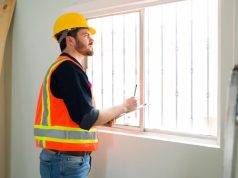Installing a solar power system comes with numerous benefits that go beyond just reducing your electricity bill. One of the most significant advantages is the potential for long-term savings. While the upfront costs of installing solar panels may seem daunting, over time, they can generate considerable cost savings by generating clean energy and reducing or even eliminating your reliance on traditional energy sources.
In addition to saving money, solar power systems also offer environmental benefits. By utilizing renewable energy from the sun, you can significantly reduce your carbon footprint and contribute to a more sustainable future. Solar panels produce zero emissions during their operation and require minimal maintenance, making them an environmentally-friendly choice.
Another advantage of solar power systems is their durability and reliability. Unlike traditional power sources that are susceptible to outages caused by storms or infrastructure issues, solar panels continue to work efficiently even during cloudy weather conditions. This reliability ensures that you have a consistent source of electricity at all times, providing peace of mind and convenience.
Overall, embracing solar power systems can bring about financial savings while promoting a cleaner environment and offering a reliable source of electricity. By investing in this renewable technology, you not only benefit personally but also contribute towards creating a greener world for future generations.
Section 1: Factors Affecting the Cost
There are several factors that can affect the cost of a solar power system. One important factor is the size and capacity of the system. In general, larger systems with more solar panels will cost more than smaller systems. This is because larger systems require more materials and labor to install.
Another factor that can impact the cost is the location of the installation. The amount of sunlight an area receives plays a significant role in determining how much energy can be generated by a solar power system. Areas with abundant sunlight will generally have lower costs because less equipment is needed to generate a sufficient amount of electricity.
The type and quality of equipment used in the system also affects its cost. Higher quality components may have a higher upfront cost, but they tend to be more efficient and durable, leading to long-term savings on maintenance and replacement costs.
Additionally, government incentives such as tax credits or grants can significantly reduce the overall cost of installing a solar power system. These incentives vary depending on location and change over time, so it’s essential for homeowners to stay updated on any available opportunities for financial assistance.
Overall, understanding these factors can help homeowners make informed decisions about their solar power investments and ensure they get the most value for their money. By considering system size, location, equipment quality, and available incentives, homeowners can better estimate the total cost of installing and operating a solar power system in their homes or businesses
Section 2: Initial Investment and Equipment Costs
One of the key factors to consider when deciding to invest in a solar power system is the initial investment and equipment costs. While it is true that setting up a solar power system requires an upfront investment, one must also weigh this against the long-term financial benefits.
The initial investment for a solar power system typically includes the cost of solar panels, inverters, batteries (if required), and installation fees. These costs can vary depending on factors such as the size of the system needed to meet your energy requirements, quality of equipment chosen, and any additional components required for specific installations. It is crucial to consult with reputable solar installers or get multiple quotes to ensure you are receiving competitive pricing for both equipment and installation services.
However, it’s important not just to focus solely on these initial costs but also ask yourself how much can you save with solar. With reduced electricity bills and potential opportunities for selling excess electricity back into the grid through feed-in tariffs or net metering programs (depending on where you live), homeowners can recoup their initial investment over time while enjoying ongoing energy savings. Additionally, investing in renewable energy sources such as solar can increase property value and attract environmentally conscious buyers if you plan to sell your home in the future.
By carefully considering the initial investment required for a solar power system and weighing it against long-term financial benefits, individuals can make informed decisions about whether going solar aligns with their goals and budget. While there
Section 3: Government Incentives and Rebates
One of the factors that greatly influences the cost of a solar power system is the availability of government incentives and rebates. These initiatives are put in place to encourage homeowners and businesses to invest in renewable energy sources, such as solar power.
Government incentives can include tax credits, grants, or low-interest loans that help offset the initial cost of installing a solar power system. For example, in the United States, there is a federal Investment Tax Credit (ITC) that allows individuals and businesses to deduct a percentage of their solar installation costs from their federal taxes. Additionally, many state governments offer their own incentive programs, such as cash rebates or performance-based incentives.
By taking advantage of these incentives and rebates, homeowners can significantly reduce the upfront costs associated with going solar. This not only makes it more affordable for individuals to install systems on their properties but also helps stimulate the growth of renewable energy infrastructure on a larger scale.
However, it’s important to keep in mind that government incentive programs are ever-changing. The availability and specific terms may vary depending on your marital status (such as de-facto relationships) and also by earnings and location, so it’s crucial to research current programs before making any decisions about installing a solar power system.
In conclusion, government incentives and rebates play an integral role in reducing the cost barriers associated with adopting solar power systems. By harnessing these initiatives effectively, individuals can access financial support that makes transitioning to clean energy more feasible. Taking advantage of government incentive programs not only benefits individual homeowners
Section 4: Long-term Savings and Return on Investment
When considering the cost of a solar power system, it’s essential to factor in the long-term savings and return on investment. While upfront costs may seem daunting, a solar power system can lead to significant financial benefits over its lifetime.
One of the most significant advantages of solar energy is its potential for long-term savings on electricity bills. By generating your own clean energy, you can reduce or even eliminate your reliance on grid electricity. This means that any excess energy produced by your solar panels can be sold back to the grid, earning you credits or payments through net metering programs. Over time, these savings can offset the initial investment and result in substantial financial gains.
Additionally, a solar power system offers an attractive return on investment (ROI) due to its durability and longevity. Solar panels commonly come with warranties that guarantee their performance for 25 years or more. With minimal maintenance requirements, these systems can continue producing electricity efficiently for decades after their payback period has been reached. As utility rates tend to increase over time, owning a solar power system becomes even more financially appealing as it provides protection against rising energy costs.
Investing in renewable energy not only benefits your finances but also contributes positively towards creating a cleaner environment for future generations. By choosing solar power today, you become part of the sustainable solution while reaping long-term financial rewards tomorrow.
Conclusion: Is a Solar Power System Worth It?
In conclusion, investing in a solar power system is undoubtedly worth it in the long run. While the upfront costs may seem daunting to some, the return on investment is substantial. Not only will you be able to significantly reduce or even eliminate your electricity bill, but you will also contribute to a cleaner and more sustainable future. With advancements in technology and government incentives, solar panels have become more affordable than ever before.
Moreover, there are additional financial benefits that come with installing a solar power system. Many governments offer tax credits and rebates for homeowners who switch to solar energy. Additionally, some utility companies allow homeowners to sell excess electricity back to the grid through net metering programs. This means that not only can you save money on your own electricity consumption, but you could potentially make money by selling unused energy.
Furthermore, investing in solar power is not just about saving money; it’s about making a positive impact on the environment. By reducing reliance on fossil fuels and decreasing greenhouse gas emissions, you can actively contribute towards mitigating climate change and preserving our planet for future generations.
In conclusion, while the initial cost of a solar power system may seem significant, the long-term benefits far outweigh any concerns about affordability. The combination of reduced electricity bills and potential financial incentives makes going solar an attractive option for homeowners looking to lower their carbon footprint while saving money in the process. So why wait? Start exploring your options today and join the growing community of eco-conscious individuals embracing renewable energy solutions.











